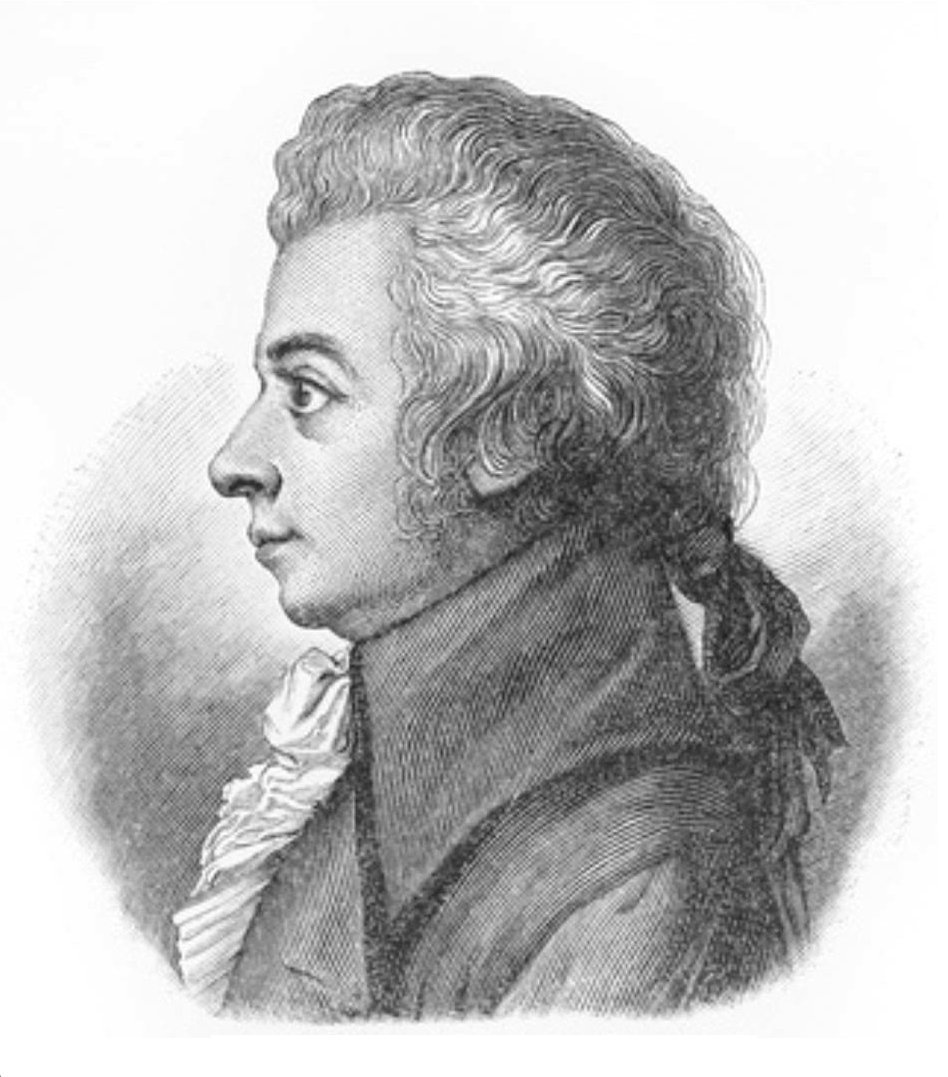|
||
|
Mozart's last three symphonies were all written in the summer of 1788 in a period of exceptional productivity, even by his standards. The three may have been conceived as a set since they are complementary in style. The symphony in Eb major (No. 39) was completed on the 25th July and is the longest, grandest and most assured of the three. By contrast the G minor symphony is a more subdued work with moments suggesting nostalgic longing, and others of passion and anger. It was completed on the 25th July. The third in C major was completed just over two weeks later and is the most brilliant and exuberant of all Mozart's symphonies. Each of the three shows a high degree of individuality and originality and all contain major innovations in symphonic construction that were to influence the works of Haydn and Beethoven and indeed generations of later composers. One of the most striking features of the symphonies is the use of counterpoint within the musical texture. Mozart had become very interested in the works of Bach at this time, but rather than copy his great predecessor, he found innovative ways to incorporate contrapuntal writing in his own style. There is no record of the first performance of the G minor symphony, though there is strong evidence that it was performed at least once in Mozart's lifetime. The most compelling evidence is that he made a revision of the score to include a parts for clarinets, which were omitted from the original orchestration. He would not have undertaken this revision unless he had a specific performance in mind. Posters have survived for a concert given in Vienna on 17 April 1791, conducted by Antonio Salieri, in which the first item was "A grand Symphony composed by Herr Mozart", and in which clarinets were played by the brothers Anton and Johann Stadler. This could well have been the concert for which Mozart revised the symphony, though it is also possible that the grand symphony was number 39. The G minor symphony has attracted universal admiration from critics and composers alike, and is perhaps one of the most influential of all Mozart's works. Beethoven copied out parts of it in one of his sketchbooks. It has been suggested that the last movement may have inspired both the opening of his first piano sonata and the third movement of his fifth symphony. Echoes of the work are also heard in Schubert's fifth symphony and in his string quartets. Later, Robert Schumann described the work as possessing 'Grecian lightness and grace'. Many critics have commented on the opening gesture of the symphony where an inner voice from the violas is heard momentarily before the main theme of the movement is played by the violins. This simple but striking idea was to become a favourite with later composers. Notable examples are Mendelssohn's violin concerto, and Rachmaninoff's third piano concerto. The inner voice launches the movement with a sense of urgency and anxiety. It is written in the style called "sturm und drang" and expresses intense emotion and longing. Mozart's use of irregular phrase lengths and dramatic contrasts of dynamics creates a feeling of uncertainty and of searching for something elusive, and propels the work forward with an unceasing frenetic energy. In the development section Mozart uses fast changing harmony to create a sense of excitement, but also tosses the opening theme between the higher and lower voices of the orchestra and introduces a fast moving counter subject. At the start of the recapitulation - the point where the opening material returns in the home key - he adds a touch of mystery by contrasting the busy main theme with a simple descending idea in long notes played by the bassoons. The second movement is by contrast gentle and relaxed. The opening tune appears in canon, but the counterpoint is merely suggested here and never developed. The second half of the movement starts with a dramatic development of its first subject using the full orchestra and casting a dark shadow over the mood of calm. However, it is short lived and the gentle atmosphere returns to complete the movement. The third movement is a Minuet and Trio. The triple time has an almost military insistence, but is contradicted by syncopations in the tune. In the second half contrapuntal ideas are introduced. A counter subject appears with the minuet tune, and canonic passages add to the drive and energy of the piece. The trio forms a strong contrast to the minuet, having long legato phrases and using the major mode. The final movement of the symphony is perhaps the most original of all. In contrast to the first movement it has more regular phrases giving it a decisive character. Its mood is one of anger, accentuated by sudden strong contrasts of forte and piano. At the start of the development section Mozart writes a passage of extraordinary dissonance and disruption. In it he uses every note except G - the key note of the symphony, and with this remarkable idea seems to anticipate the serial music of the early twentieth century. Following this passage comes an extended contrapuntal section. It starts with well spaced entries of the subject in the manner of a fugue, but as the section continues the entries appear faster, overlapping more insistently and exploring more distant harmonic areas. Mozart neatly integrates ideas from baroque counterpoint in his own ingenious development techniques. The movement drives on to its conclusion with seemingly limitless energy. Mozart's 40th Symphony was performed by the Portobello orchestra on the 12th December 2009, conducted by Anthony Weeden. back |
 |
|
